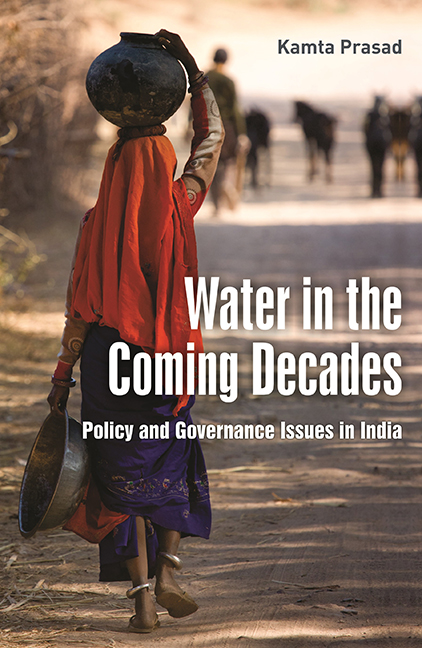Book contents
- Frontmatter
- Dedication
- Contents
- List of Tables
- List of Abbreviations
- Preface
- Acknowledgements
- Section I Overall Perspectives
- Section II Situational Analysis
- Section III Socio-economic, Institutional and Environmental Aspects
- Section IV Technological Options
- Section V Concluding Observations
- References
- Index
7 - Drinking Water Scenario: Adequacy, Pricing and Quality
Published online by Cambridge University Press: 13 July 2022
- Frontmatter
- Dedication
- Contents
- List of Tables
- List of Abbreviations
- Preface
- Acknowledgements
- Section I Overall Perspectives
- Section II Situational Analysis
- Section III Socio-economic, Institutional and Environmental Aspects
- Section IV Technological Options
- Section V Concluding Observations
- References
- Index
Summary
Life is not possible without water. Drinking water, therefore, is the most important use of water. It occupies a pivotal place in all the three versions, the National Water Policy as well as State level Water Polices in India. A book on water resources should not be regarded as complete without a discussion on issues related to drinking water. The aspects dealing with adequacy, pricing and quality of drinking water are discussed in this chapter, while the legal aspects are discussed separately in Chapter 20 and the aspects related to wastage of piped drinking water in urban areas have been analysed in Chapter 2. Issues related to private sector financing of drinking water schemes are analysed in Chapter 15.
Adequacy of drinking water
Everybody must have adequate quantity of water for survival. Adequacy, as per the norms for rural and urban areas, as mentioned in the Tenth Five Year Plan (FYP) is defined below.
(i) Norms for rural areas
• 40 L per capita per day (lpcd) or one hand pump for 250 persons within a walking distance of 1.6 km or at an elevation difference of 100 m in hills.
• 30 lpcd additional for cattle in Desert Development Programme (DDP) areas.
(ii) Norms for urban areas
• 40 lpcd where only spot sources are available.
• 70 lpcd where piped water supply is available but there is no sewerage system.
• 125 lpcd where both piped water supply and sewerage system are available.
• 150 lpcd for metro cities.
• Additional water for other demands like industrial, commercial, institutional, fire fighting, gardening, etc.
The state governments are mainly responsible for taking care of supply of drinking water. They have been implementing rural water supply schemes under the state sector Minimum Needs Programme (MNP). The Government of India has also been taking supplementary measures in both rural and urban areas. In 1972–73, the Government of India launched a scheme for providing water supply to problem villages in rural areas. This was known as Accelerated Rural Water Supply Programme (ARWSP) with 100 per cent grants-in-aid. The implementing agencies for ARWSP are decided by the concerned state governments.
- Type
- Chapter
- Information
- Publisher: Foundation BooksPrint publication year: 2014



